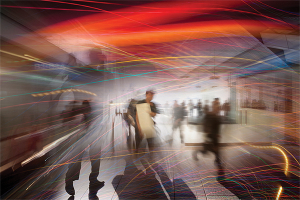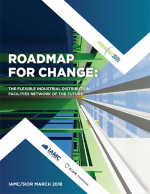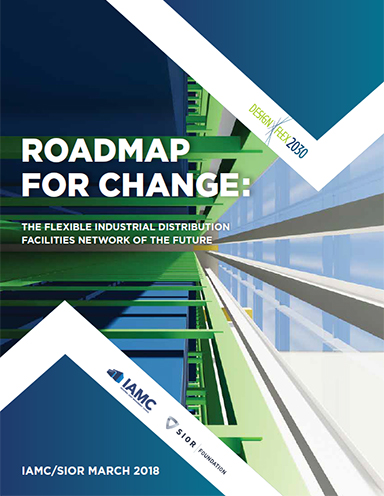Roadmap for Change: The Flexible Industrial Distribution Facilities Network of the Future
This white paper addresses ways to reimagine existing obsolete warehouse space, and in an uncertain future, one thing’s for sure: the era of the vast, single-use, single storey, plain-vanilla warehouse is over.
“Roadmap for Change: The Flexible Industrial Distribution Facilities Network of the Future” details the work of a top-notch team of industrial architects and engineers who set out to explore and understand these massive changes, which are already underway.
They aimed to reimagine today’s disconnected and underperforming industrial distribution facilities as a nimble, networked system that can accommodate future change and the increasingly customer-centric direction in which businesses are going.
The concepts presented in the paper are grounded in reality but draw on an imaginative forecasting of the state of society, looking out 25–50 years.
The paper is the third in a series, part of the DesignFlex2030 initiative sponsored by the Industrial Asset Management Council (IAMC) and the Society of Industrial and Office Realtors (SIOR).
The paper addresses ways to reimagine existing obsolete warehouse space offers innovative solutions to the problem of rising industrial lease rates and land costs, and provides approaches that can help revitalize stagnating pockets of communities and reverse urban blight.
More broadly, the paper proposes concepts that future-proof distribution facilities across the range of manufacturing sectors - from aeronautics to plumbing fixtures - helping to strike the balance between cost-effectiveness and growing demand for just-in-time delivery.
First, the paper explores the trends that are upending the supply chain and the impacts they will have on distribution-related facilities.
It identifies six key disruptors and ways to accommodate change:
- global migration to ever-larger megacities;
- self-orchestrated supply chains;
- robotics and automation;
- autonomous logistics and new modes to move people and things; and
- smart technologies and the Industrial Internet of Things or IoT
Next, the paper showcases entirely new warehouse and distribution facilities concepts, marrying world-class art and industrial design with elegant form and highly efficient function.
As envisioned by the DesignFlex2030 team, the new network is a connected web of multiple fixed and mobile facilities, varying in size, shape, function, and scope, strategically located at various points along the logistics journey between OEM and end users in a 24-7 network, unconnected to a 5-day/8-hour workweek.
It transforms overlooked and underutilized space - along with the air above and ground below - into a new industrial real estate resource that can be deployed for multiple uses as the lines between factory and warehouse blur.
With flexible elements embedded in each of the facilities, the individual buildings and the network as a whole represent a dramatic departure from traditional warehouse design approaches.
What’s Related


Favorites





